
views
Do You Have the Right Door?
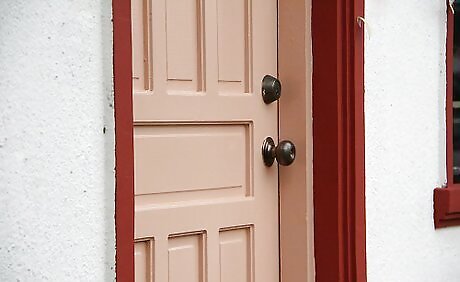
Get the right doors. If your front and back doors are hollow, you need to replace them immediately. How do you know if your door is hollow? Simply knock on it. Hollow doors are merely sheets of veneer over a cardboard core. All exterior doors should be solid and made from the following materials: Fiberglass Solid wood Solid wood core (a layer of veneer over solid wood) Metal (Note: make sure metal doors are reinforced inside and have what is called a lock block. Otherwise, they can be bent out of the frame using a car jack)
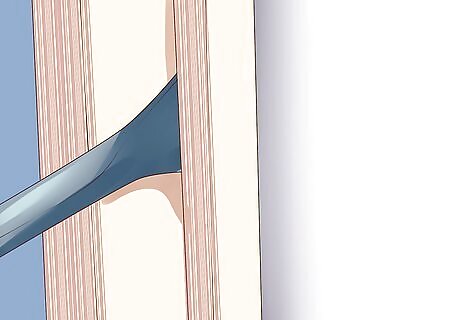
If installing/replacing a new door and frame, consider a fiberglass door that swings outward rather than inward (and don't forget using security hinges). Having a door open in this way helps absorb any type of forced entry.
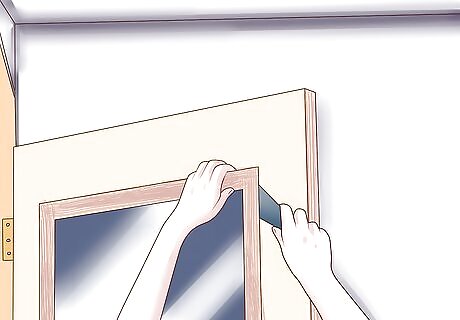
Replace all windowed exterior doors with windowless doors. For maximum security, all doors should be windowless, and you should not have windows close enough to the door so that a thief could break the window and unlock the door from the inside. A deadbolt isn't much help on any door like this for that reason. A big dog's the only possible hindrance with these doors, but only with the landlord's permission. If you do have sliding glass doors, glass door panels or nearby windows, however, cover the glass with a security grate or grille on the outside or a clear, unbreakable polycarbonate panel secured behind the glass on the inside.
Lock Your Doors
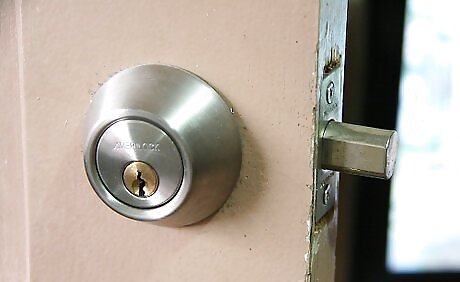
Install deadbolt locks. With the exception of sliding doors, all exterior doors should have a deadbolt lock in addition to the lock built into the doorknob. The deadbolt should be high quality (grade 1 or 2, solid metal with no exposed screws on the exterior), with a throw bolt (the bolt that comes out of the door) at least 1 inch (2.5 cm) long. The lock should be properly installed. Many homes have lower quality deadbolts or throw bolts less than 1 inch (2.5 cm). These must be replaced.
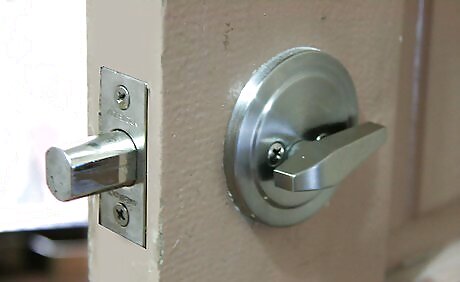
Install a dead-lock. Adding an additional lock will provide extra security when you are home. The dead-lock (sometimes called an 'exit-only deadbolt') is a deadbolt that does not have an external key. It may be clearly visible on the door from the outside, but it cannot be broken into without destroying the door, frame, or lock itself. While this security won't help directly when you aren't home, its visibility may discourage an intruder from trying the door.

Secure sliding doors. The best way to secure sliding doors is to install keyed locks at the top and bottom. You can also make or purchase a bar that swings down from the door frame to the middle of the door to prevent the door from sliding. At the very least, place a rod (a thick wooden dowel, for example) in the bottom track of the door to keep it from being opened. Regardless of the method you use, it's a good idea to reinforce the glass with polycarbonate panels, as recommended in the previous step.
Reinforce Your Entryway

Install cylinder guards around the lock cylinders (the part where you insert the key). Burglars can sometimes remove or damage lock cylinders by hammering, wrenching, or prying. Protect these with metal guard plates or protective rings on both sides of the door. Install guard plates with round-head carriage bolts to prevent them from being unscrewed. Free-spinning rings around the cylinders will prevent the use of a pipe wrench to twist out the cylinder. Many locks come with these already, but if yours doesn't, you can purchase them.
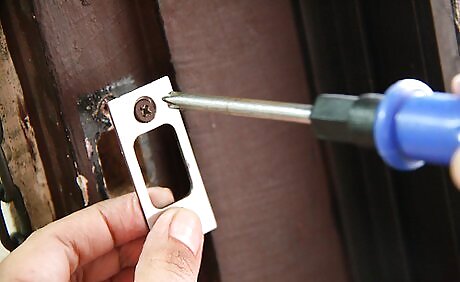
Replace flimsy strike plates. The strike plate is the metal plate that surrounds the lock-set (the hole in the door frame where the lock bolt enters). All exterior doors should have heavy-duty metal security strike plates secured by four 3-inch screws. Many homes are built with lower quality strike plates or have strike plates that are secured with short screws that just attach to the door jamb, not the underlying stud.
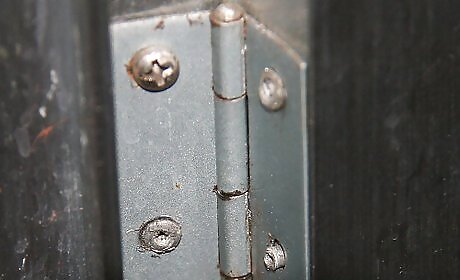
Secure exposed hinges. Hinges should be on the inside of the door. If yours are not, rehang the door or secure the exposed hinges with non-removable pins. You can do this by removing at least the two center screws of the hinge (on each side) and replacing them with non-removable hinge pins (you can get these at the hardware store) or double-headed masonry nails. Even hinges that are not exposed should be secured to the frame with 3-inch screws.

Fortify your frame. Even if your door is strong and has high-quality, properly installed locks, a burglar may be able to gain entry by breaking or prying the door frame. Most door frame moldings are simply tacked to the wall, so a crowbar or a solid kick can easily separate the frame from the wall. Secure your door frames to the walls by installing several 3-inch screws along the frame and doorstop. The screws should reach the wall stud.















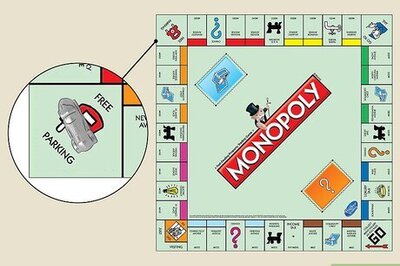



Comments
0 comment